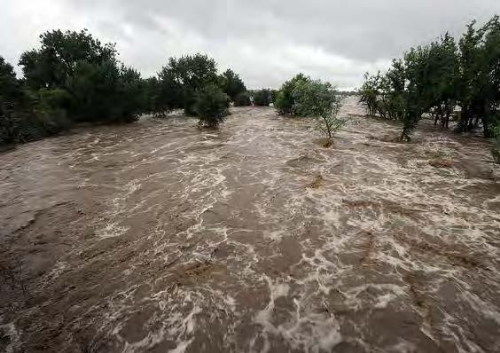From the Rocky Mountain Research Station:
The summer of 2013 was drier than normal along the Front Range, so when rain started falling on the northern end on September 9, 2013, some greeted it with enthusiasm. According to the Colorado Climate Center, total rainfall for the week beginning Monday, September 9th measured 16.9” in Boulder, 9.3” in Estes Park, 5.9” in Loveland, and 6.0” in Fort Collins. Because the steep, rocky terrain in and around these communities channels water, the effects of precipitation can be greatly amplified and lead to rapid runoff. The sudden, huge influx led to extensive flooding that damaged infrastructure on the Arapaho and Roosevelt National Forests and devastated property, infrastructure, and lives in surrounding communities.

